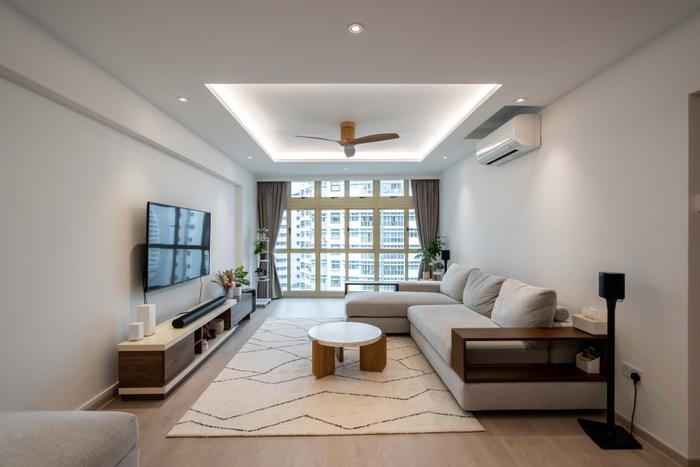Regardless of your budget, revamping a home typically takes a hefty chunk out of your wallet, and not to mention, time.
For this reason, having an idea of how the entire process is carried out is key to achieving a productive renovation – and it all begins with straightening out the paperwork. Learn what the 4 most important things a renovation contract should have to ensure that your home makeover journey stays on track from start to end.
What is a well-written renovation contract, and why is it important?

View this project by Design 4 Space
The primary purpose of a renovation contract is to lay out all the entire scope of the project in black-and-white and it should include an exhaustive list of all works that will be performed throughout the project’s length as well as any costs involved.
In relation, the importance of a renovation contract stems from its usefulness in preventing and/or clarifying any form of ambiguity that arises during the course of making over your home – so be sure to pore through and understand the contract’s details before signing it.
A basic renovation contract should outline the following details clearly:
1. Scope of Work
Other than providing a list of materials used, this section also breaks down the different stages of your home renovation, and the various tasks that will be undertaken by your contractor. Such responsibilities commonly include:
a. General Services

Includes consultation, site coordination and project management tasks. These services range from pre-renovation preparation work, such as the creation of design plans, to post-renovation clean-up tasks like chemical and general washes.
b. Hacking & Demolition Works

Tasks related to the removal and disposal of pre-existing structures and/or old fittings in any room, such as flooring, non-load bearing walls, doors and windows should come under this sub-section.
c. Electrical Works

Common examples of electrical works consist installation of additional power sockets, auxiliary items, fixed appliances and wiring covers. But do take note, in some cases, these tasks may be performed by an independent contractor, and will be billed separately.
d. Plumbing

Primarily carried out in the bathroom, kitchen and/or yard, common plumbing-related renovation tasks include the running of pipes and installing water fittings, such as sinks and WCs.
e. Carpentry

Concerns the installation of various cabinetry and their internals for the kitchen, bedrooms and/or other living areas.
2. Cost Breakdown

View this project by Medina Design & Interiors
Often listed side-by-side each entry in the “Scope of Work” section, this part of the contract details both labour and material costs for individual renovation tasks (e.g. The cost of removing old floor tiles as well as supplying and laying new ones).
And while this section doesn't require much of an explanation, it is needless to say that you should always have an idea of how much things cost. Feeling unsure about the overall price quotation? Try using the Qanvast Renovation Calculator to get a cost estimate and see how close things are.
3. Payment Schedule

In essence, this section provides a rough outline of when you should pay your contractors and will stipulate any related terms and conditions.
While the exact details may vary from company to company, payments are typically stretched across the entire length of the project from the start (when a deposit of approximately 10-15% of the total bill is paid) to the end (typically, the remaining 5% of the total bill), with additional instalments to be paid upon the completion of key milestones.
Other important payment terms are also listed within this section. For instance, the amount of compensation that your contractor is entitled to if the project is terminated prematurely, and goodwill discounts (if any).
4. Defects Liability Period

View this project by Idfferent Design
Just like making a purchase on a new car, a form of warranty is guaranteed following the completion of your home renovation.
Commonly stated in most renovation contracts as the Defects Liability Period (DLP), this warranty lasts up to 12 months, during which your contractor is liable for repair costs owing to faults that stem from defective materials or imperfect workmanship.
Get trusted designer firm recommendations with Qanvast
Enlist the help of reliable interior designers with Qanvast! Request for an interior design quote here, and we will match you with up to 5 firms, based on your budget and style preferences.
What’s more, if you engage a recommended designer, you’ll be eligible for the Qanvast Trust Programme, which offers you attractive perks like a renovation deposit safeguard of up $50,000 and upsized furniture discounts!
This article was originally published on 28 Nov 2017 and last updated on 14 Oct 2022.

 Get a budget estimate before meeting IDs
Get a budget estimate before meeting IDs